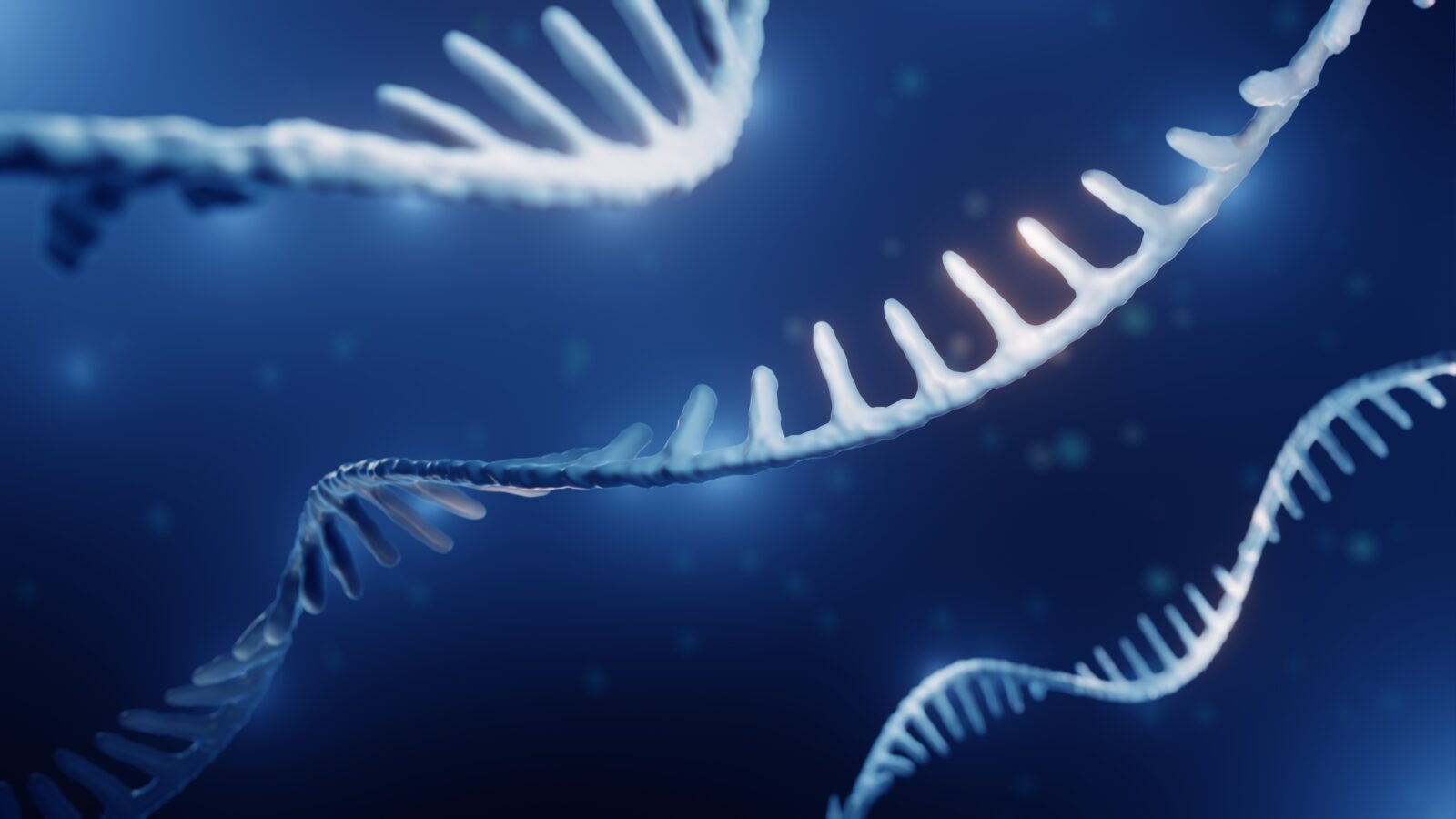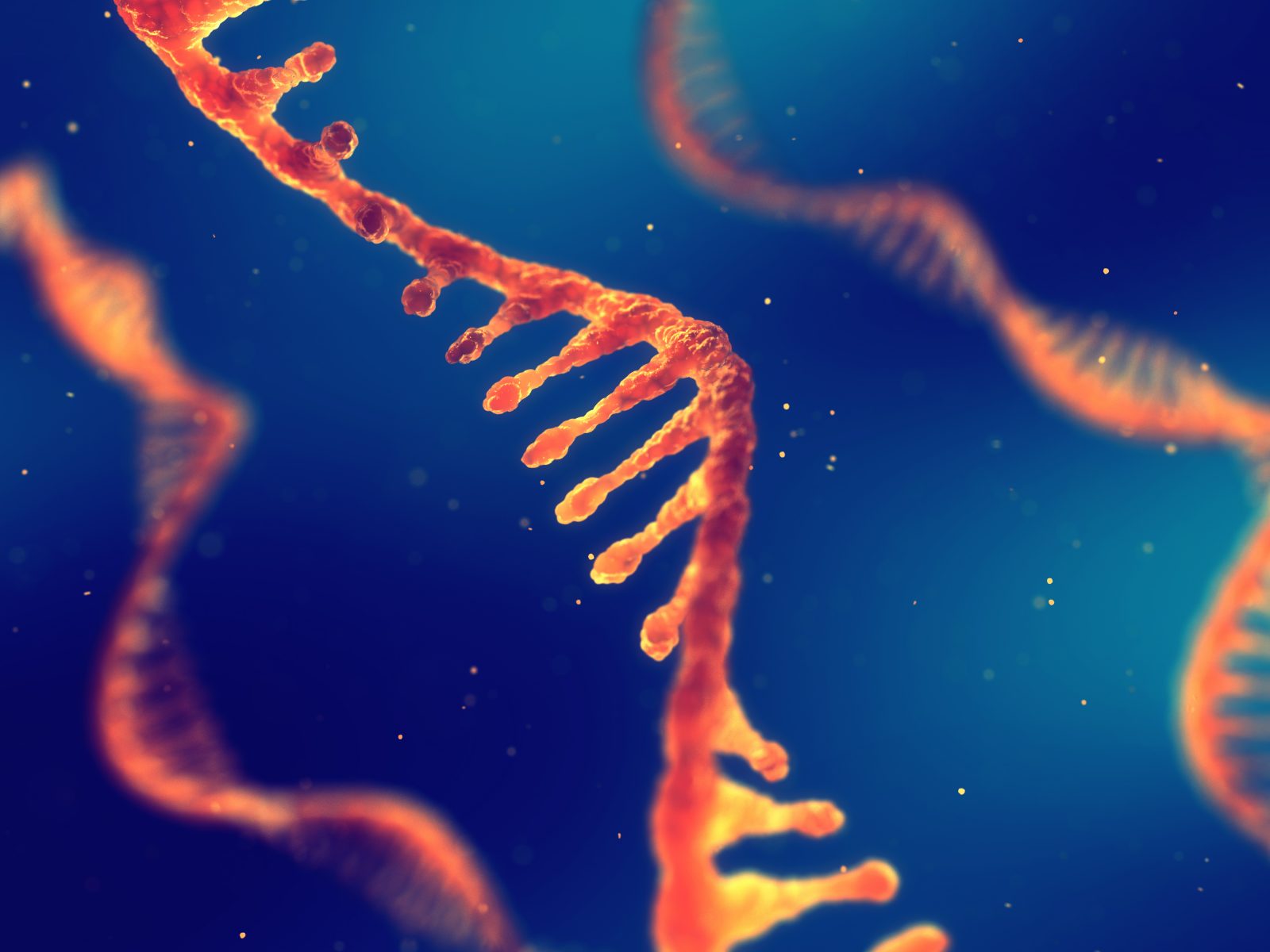


Casey Luskin On Junk DNA’s ‘Kuhnian Paradigm Shift’

Minimal Replication Fidelity: Another Problem for the RNA World Hypothesis

James Tour: The Goalposts are Racing Away from the Origin-of-Life Community
On today’s ID the Future distinguished nanoscientist James Tour explains to host Eric Metaxas why the origin-of-life community is further than ever from solving the mystery of life’s origin, and how the public has gotten the false impression that scientists can synthesize life in the lab. Tour explains that origin-of-life scientists aren’t even close to intelligently synthesizing life from non-life in the lab. The problem, Tour says, is that some leading origin-of-life researchers give the impression they are right on the cusp of solving the problem. Not so, Tour says. He offers the analogy of someone claiming, in the year 1500, that he has the know-how to build a ship to travel to the moon, when no one yet knows even how to build an airplane, car, or car engine. Tour says that if he took a cell that had just died a moment before and asked top origin-of-life researchers to engineer it back to life, they couldn’t do it. They’re not even close to being able to do it. And yet all the ingredients, all the building blocks of life are right there, all in one place, in the right proportions. And not only can scientists not engineer those ingredients back to life, they still can’t synthesize even a fraction of the building blocks essential to cellular life, despite decades and millions of dollars poured into the problem. And yet they assume that purely blind material processes turned prebiotic chemicals into all the key building blocks, and then mindlessly engineered those into the first self-reproducing cell on the early Earth. There are no models that would make such a scenario plausible. And the more we learn about cellular complexity, the harder the problem gets. Indeed, as Tour puts it, origin-of-life research is like moving down a football field in nanometer increments while the goalposts are racing away. What’s left is only the dogmatic assumption among origin-of-life researchers that the first life must have appeared on Earth purely through blind material forces. Tour has made it his mission to show the broader scientific community and the public that the emperor has no clothes. Not surprisingly, the origin-of-life community has not responded with heartfelt gratitude. Tune in to hear more of Tour’s argument and to learn what kind of blowback he has experienced. The interview is reposted here with permission of Eric Metaxas and Socrates in the City. Find James Tour’s many videos on the origin-of-life problem here.

Origin-of-Life Mystery at the University of Tokyo, Pt. 2
Today’s ID the Future is Part 2 of physicist Brian Miller exploring a recent report from the University of Tokyo claiming a big breakthrough in origin-of-life research. As Miller and host Eric Anderson make clear, the university’s laboratory work on RNA, detailed in a recent Nature Communications article, involved the intelligent interference of the lab scientists and, despite this intelligent interference, the devolution of RNA rather than the evolution of increasing RNA sophistication. Miller says that it’s ironic that Steven Novella, a scientist committed to puncturing science hype, seems to have fallen for the hype surrounding this laboratory work. Miller and Anderson go on to discuss critiques of origin-of-life tall-tale claims, critiques coming Robert Shapiro, James Tour, and others. Life, Miller says, requires organizational blueprints and design logics already in place to battle against nature’s relentless tendency toward entropy. Without those sophisticated organizational blueprints already instantiated in living cells and sophisticated molecular machinery, natural forces appear utterly powerless to pull off the kind of creative design work required to move from non-life to life.

Did U of Tokyo Just Solve the Mystery of Life’s Origin?
On this ID the Future, Brian Miller, research coordinator for the Center for Science & Culture, reports on laboratory research recently presented in Nature Communications and in a University of Tokyo press release— research that supposedly provides dramatic “new insights into the possible origin of life,” and specifically “the molecular evolution of RNA.” The popular press picked up on these claims and ran with them, including in this May 5 Quanta article that breathlessly reported, “When researchers gave a genetic molecule the ability to replicate, it evolved over time into a complex network of ‘hosts’ and ‘parasites’ that both competed and cooperated to survive.” Miller says nothing remotely this dramatic occurred in the experiment. He insists there were no great revelations from this laboratory work, aside perhaps from it further corroborating the view that precisely orchestrated interventions of an intelligent designer (in this case, that of the lab researchers) are required in order to make any headway on the road from non-life to life. But as Miller’s conversation with host Eric Anderson suggests, even that might be to exaggerate what the University of Tokyo experimenters accomplished, since the RNA “evolution” they achieved was actually devolution. Tune in as Miller and Anderson break it down. And for more, check out Miller’s Evolution News article on the subject.

How Universal Common Descent Survives Failed Predictions
On today’s ID the Future, philosopher of biology Paul Nelson discusses his chapter in a recent Harvest House anthology edited by host Casey Luskin, The Comprehensive Guide to Science and Faith. Nelson says the theory of universal common descent, a key component of modern evolutionary theory, has generated multiple predictions that have failed. The prediction he discusses here is that there would turn out to be a single universal genetic code, since that’s what we should expect if all life on earth is descended from the last universal common ancestor (LUCA). Findings over the past three decades have proven that prediction spectacularly wrong. How does the theory of universal common descent shrug off this contrary empirical finding? The trick for LUCA in this and similar cases is to shift blame for failure to an ancillary theory. It’s a clever move, says Nelson, but it comes at a cost.

New Animated Video Dismantles Origin-of-Life Hype
Today’s ID the Future spotlights a new origin-of-life video showing that researchers aren’t anywhere close to creating life from non-life, despite the fact most Americans seem to believe otherwise. In the episode, host Eric Anderson interviews Stairway to Life co-author Rob Stadler, who helped create the new Long Story Short animated video. Stadler and Anderson explore how origin-of-life papers and popular media reports have misled the public, evidenced by a survey underscored by Rice University synthetic organic chemist James Tour. Then they discuss several daunting origin-of-life hurdles beyond the synthesis of key chemical building blocks. These are hurdles significant enough that each alone may doom the idea of life having once emerged from non-life spontaneously. Indeed, it is now a matter of record that the hurdles are so daunting that for several decades they have kept many brilliant and lavishly funded scientists from intelligently designing life from non-life in the lab. Thus it is hardly unreasonable to entertain the idea that the origin of the first life required not merely intelligent design, but an ingenious designing intelligence far beyond that of our smartest origin-of-life researchers.

Brian Miller Talks Star-Crossed RNA Strands and the Origin of Life
On today’s ID the Future, physicist Brian Miller continues his conversation with host Eric Anderson. Here they explore more problems facing the idea that life began as strings of RNA. In their discussion of the RNA World Hypothesis and the origin of life generally, they touch on ideas advanced by Jeremy England, Jack Shostak, Nick Lane, Helen Hansma, and others. One of several big problems with the RNA-first hypothesis underscored by Miller and Anderson: For it to have even a slender chance of working, you need prebiotic Earth to generate not one but two information-rich RNA strands, and they somehow need to find each other before falling apart, and do so despite the fact that they aren’t looking for each other and the statistical odds of them bumping into each other at random are vanishingly small. What about approaching the origin of life from an intelligent design perspective? Miller explains why he’s convinced that the design perspective, far from stopping science, is actually much more fruitful than a blind-evolution approach.

James Tour–A Flyover of the Challenges Facing Abiogenesis
Today’s ID the Future features the next in a YouTube video series by Dr. James Tour on the origin-of-life problem. Here Tour, a distinguished synthetic organic chemist, lists the characteristics of life and describes some features of the early Earth where life first appeared. Then he provides a fast flyover of the many grave problems of blindly evolving the first living cell from prebiotic materials.